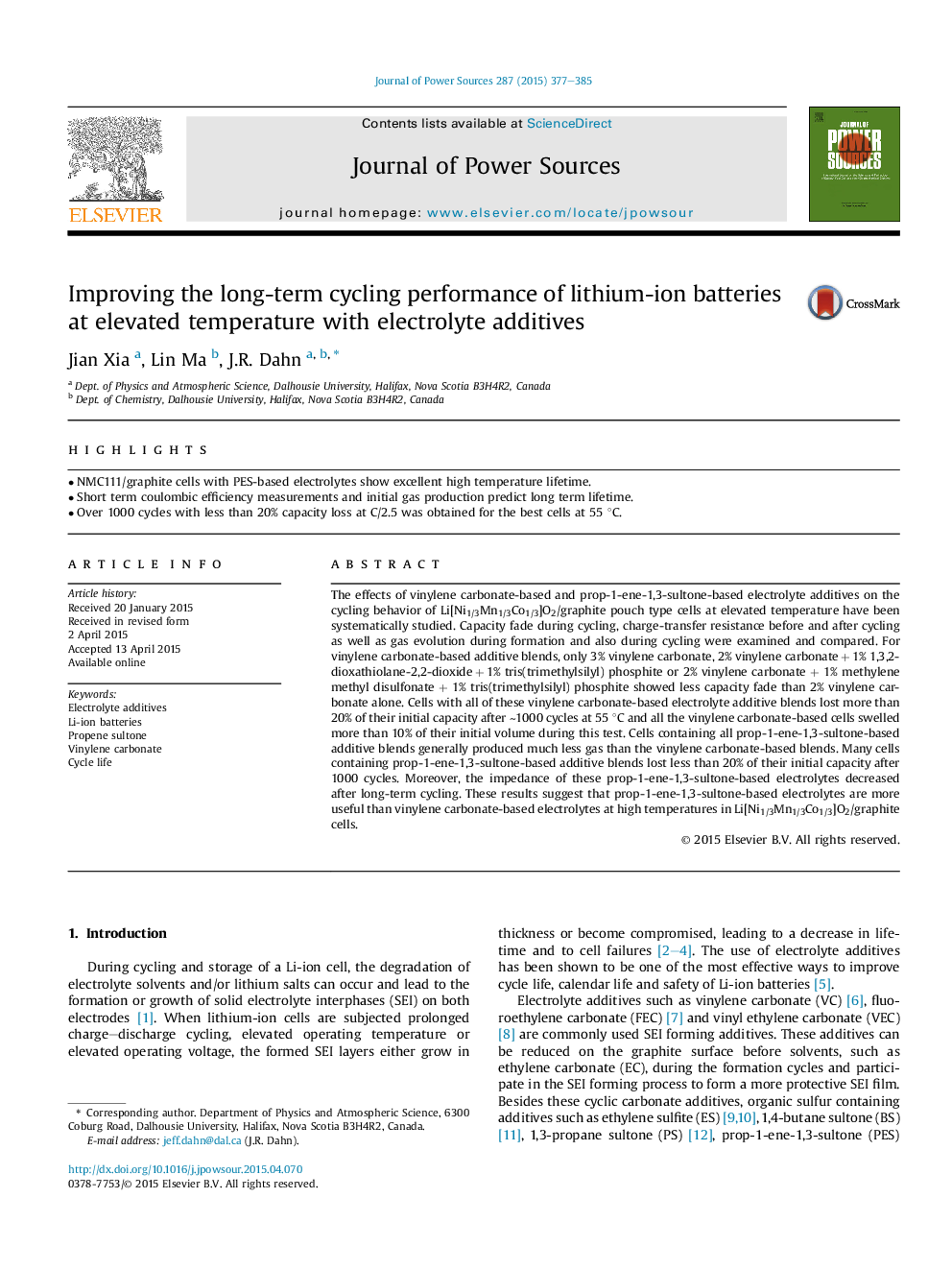| Article ID | Journal | Published Year | Pages | File Type |
|---|---|---|---|---|
| 7732445 | Journal of Power Sources | 2015 | 9 Pages |
Abstract
The effects of vinylene carbonate-based and prop-1-ene-1,3-sultone-based electrolyte additives on the cycling behavior of Li[Ni1/3Mn1/3Co1/3]O2/graphite pouch type cells at elevated temperature have been systematically studied. Capacity fade during cycling, charge-transfer resistance before and after cycling as well as gas evolution during formation and also during cycling were examined and compared. For vinylene carbonate-based additive blends, only 3% vinylene carbonate, 2% vinylene carbonate + 1% 1,3,2-dioxathiolane-2,2-dioxide + 1% tris(trimethylsilyl) phosphite or 2% vinylene carbonate + 1% methylene methyl disulfonate + 1% tris(trimethylsilyl) phosphite showed less capacity fade than 2% vinylene carbonate alone. Cells with all of these vinylene carbonate-based electrolyte additive blends lost more than 20% of their initial capacity after â¼1000 cycles at 55 °C and all the vinylene carbonate-based cells swelled more than 10% of their initial volume during this test. Cells containing all prop-1-ene-1,3-sultone-based additive blends generally produced much less gas than the vinylene carbonate-based blends. Many cells containing prop-1-ene-1,3-sultone-based additive blends lost less than 20% of their initial capacity after 1000 cycles. Moreover, the impedance of these prop-1-ene-1,3-sultone-based electrolytes decreased after long-term cycling. These results suggest that prop-1-ene-1,3-sultone-based electrolytes are more useful than vinylene carbonate-based electrolytes at high temperatures in Li[Ni1/3Mn1/3Co1/3]O2/graphite cells.
Related Topics
Physical Sciences and Engineering
Chemistry
Electrochemistry
Authors
Jian Xia, Lin Ma, J.R. Dahn,
